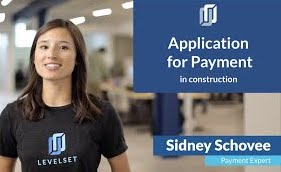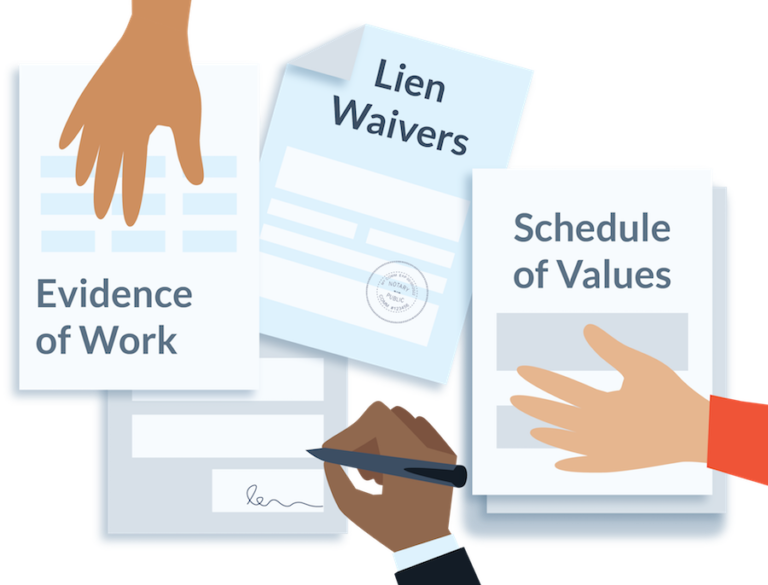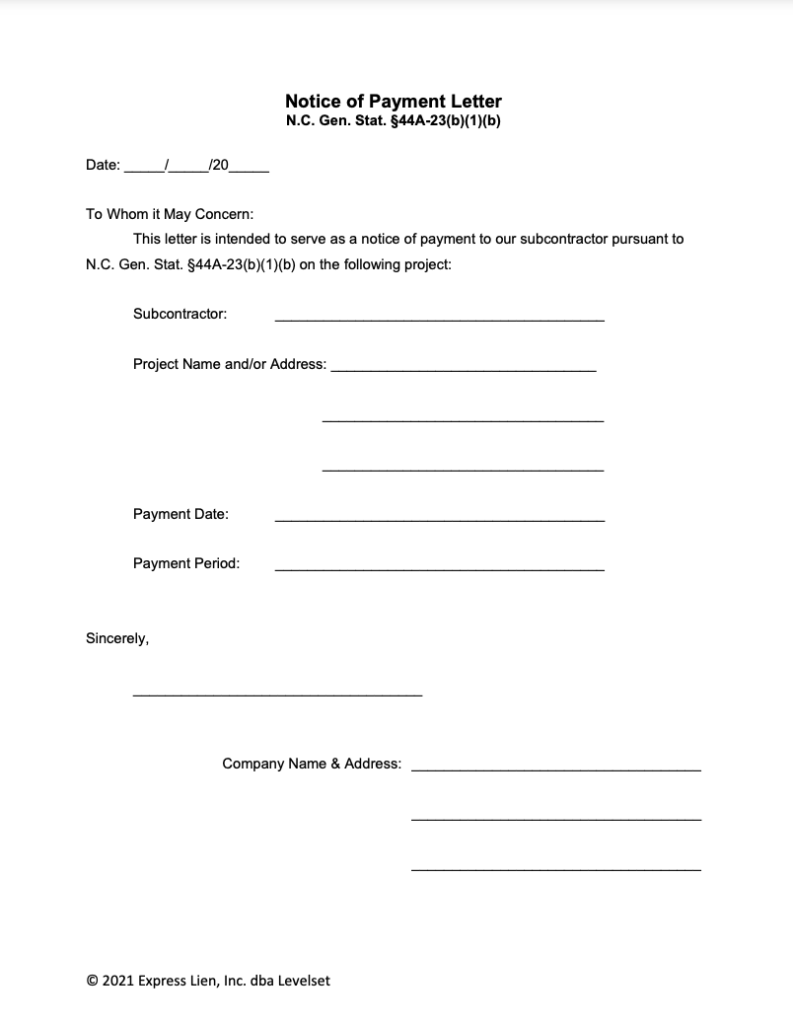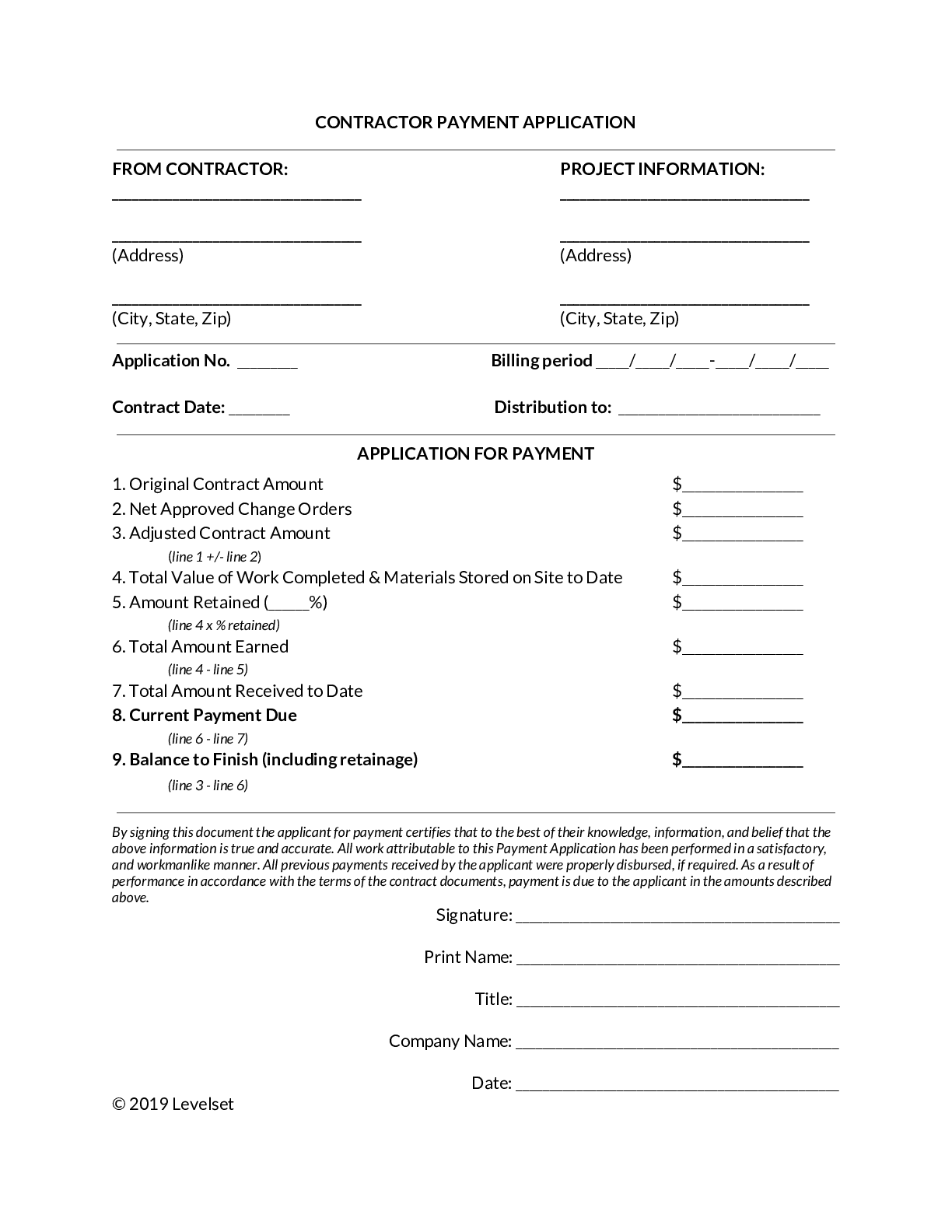What is a Construction Pay Application?
- Popular Forms
- Types of Billing
- Top Links

Video: Overview of Pay Apps In Construction
This 5-minute video will walk you through everything you need to know about payment applications, and how they work in construction.
AIA Payment Application
The AIA (American Institute of Architects) publishes one of the most popular construction payment application forms, the AIA g702. These are commonly used between general contractors and subcontractors on mid-sized and large jobs, and as part of a larger set of contract documents.

Watch: How to fill out AIA Pay Application Documents
Video series explaining how to fill out the three documents that make up the AIA payment application: AIA G702 Application and Certificate for Payment; AIA G703 Continuation Sheet, and AIA G701 Change Order Form
Consensus Docs Pay Application
ConsensusDOCs publishes another popular application of payment form, the ConsensusDoc 292 Pay App. This form is commonly used by GCs and subcontractors to manage construction payment, and like the AIA docs, is used as part of a larger set of contract documents.
Payment Application Template (Excel)
General contractors and subcontractors commonly exchange construction payment applications using Excel templates. This is easy for the parties to use, does calculations well, and is free.
Levelset Pay Application
General contractors and subcontractors can easily exchange pay applications using Levelset, and the Levelset payment application template. This payment application form uses the common style of AIA, ConsensusDOCs, and Excel pay apps.
The Schedule of Values
The "Schedule of Values" refers to a component of most pay applications. Some pay app forms, like the AIA g702, refers to this as the "continuation sheet." It sets forth the actual work done and materials delivered by a contractor during the billing period.
Construction Draw Request Process
The construction payment process is unique and typically follows a monthly "draw request" process.
Progress Payments & Billing
Many general contractors, subcontractors, and vendors will get paid monthly, and more than once, on a construction job. This results in "progress billing" and progress payments.
Regular Invoicing
Sometimes, a construction job is not complex, regulated, or structured enough for formal payment processes. In these cases, the parties will invoice the job in a more regular fashion.
Construction Loan Draw Process
Many commercial construction jobs have a construction lender in place, and these lenders will dictate a formal payment and payment application exchange process.
Running Accounts Billing
It is common, especially on smaller projects, for contractors to work a job on a "running accounts" billing system, whereby the contractor is paid hourly, through T&M, or else wise, while passing along bills as they accrue.
Billing on Prevailing Wage Jobs
The payment process can be complicated when construction jobs are regulated and have prevailing wage requirements. Payment applications must contain certified payroll records in this instance, and this complicates the pay app process.
- How to Exchange Waivers and Pay Apps Easily Webinar
- Common Pay Application Templates – AIA and ConsensusDocs
- Construction Payment Technology Can Present Difficulties to Set Accounting Procedures
- Construction Payment: What Is a Schedule of Values?
- Continuation Sheets | How Details Can Speed Up the Pay App Process
- Pay Applications | Common Mistakes to Avoid
In construction, a pay application is a group of documents exchanged between contractors during payment. On each project, the pay application process will likely differ, since the application process is governed by the construction contract. The contract should provide detail on the form to use, documents to include, and application timing and deadlines.
Pay applications may also be called payment applications, applications for payment, or pay apps.
Difference between invoices & pay applications
In most industries, the invoicing and payment process is simple. When owed money, the business owner or person in charge of bookkeeping generates an invoice using their accounting software package (such as Quickbooks for small businesses, or an enterprise ERP for bigger companies), and sends the invoice to their customer.
On most construction jobs, the payment process and the method of applying for payment are quite unique.
Instead of preparing a simple invoice, construction job participants are required to prepare a full “application for payment.” These pay applications are much more robust than a simple invoice. In fact, they are more like a full payment “package,” and since it requires many items that do not live within accounting systems, the package is usually assembled by-hand and involves a variety of people across an organization.
What to include in a pay application
A pay application typically requires the following items to be included:
- Schedule of values or continuation sheets identifying all the work completed and materials delivered during the pay period.
- Daily reports that explain the details of the site and the job while providing a record to help keep subs and stakeholders informed.
- Photo documentation for backup evidence of the work done / materials delivered.
- Vendor invoices that organize and determine how much you owe to suppliers.
- Lien waivers signed by the party submitting the payment application, and lien waivers collected from subcontractors, suppliers, and other vendors hired by the party submitting the payment application.
- Certified payroll reports on a prevailing wage job.
Pay application mistakes
Pay application timing
Since the payment application process can be complicated, it’s no wonder that the parties choose to do it only monthly. The difficulty in preparing pay applications, tracking them, and approving them is exactly why construction jobs have payment draw schedules.
The other difficult thing about construction pay applications is that they are unique to each project. What is required in a pay app, including the form that should be used, changes from project-to-project depending on the specific requirements set forth on that job. It’s not uncommon for a subcontractor to be juggling different pay application requirements on every one of their jobs!
AIA & ConsensusDocs
Some organizations, like the American Institute of Architects (AIA) and the ConsensusDOCs group, have tried to standardize the payment process (and all construction contracting) with standard “form documents.” Both groups have popular payment application forms as part of their form sets. But, unfortunately, even when one of these “form” pay applications are used, the specific requirements can remain unique and time-consuming.
For GCs: Collecting & tracking payment applications
On large construction projects, collecting payment applications from all of the subs on the job – and tracking them – can be a complicated task for general contractors. Subcontractors will provide varying levels of detail, and follow-up will often be necessary. It’s important to make sure that subs understand their responsibilities when submitting a payment application, and that you have a process in place for organizing them as they are submitted.



